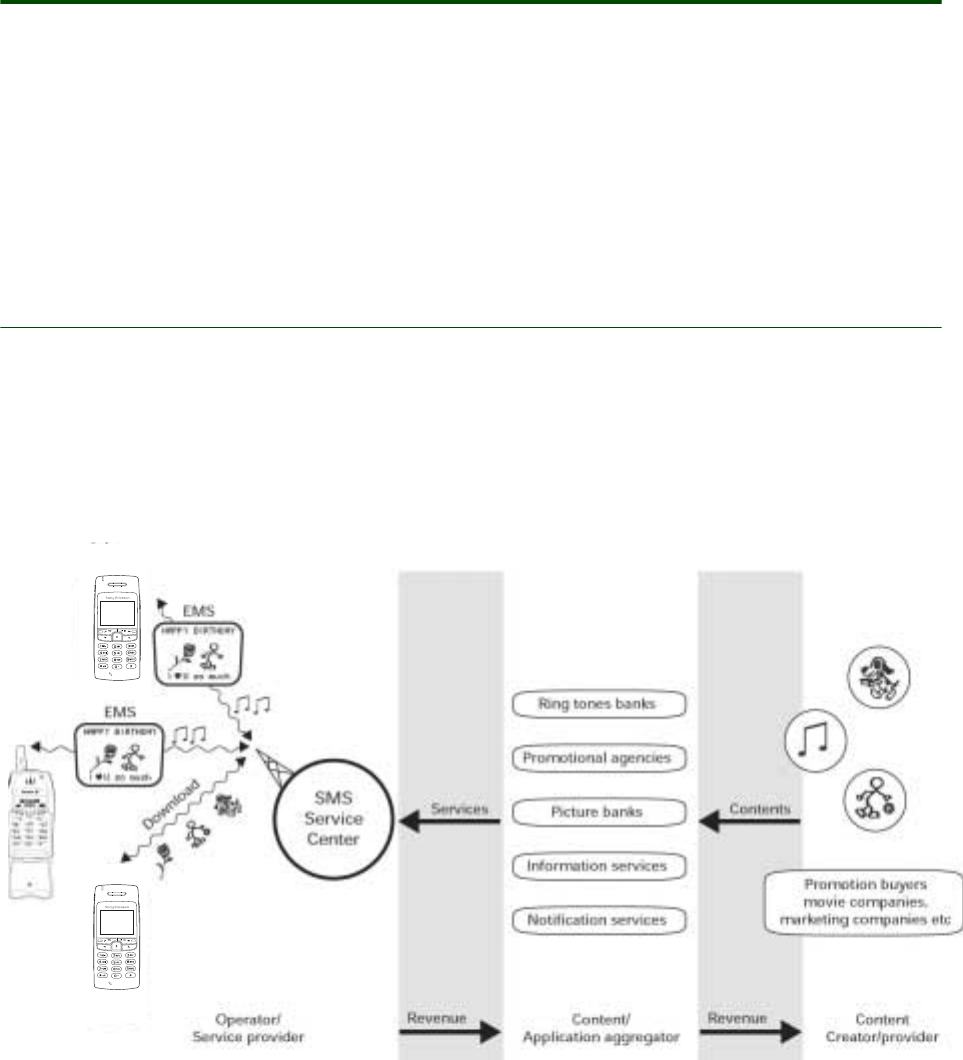
White Paper T100/T102
12 September 2002
Messaging
More than 15 billion text messages are sent world-
wide between mobile phones each month (January,
2001). The consumers’ needs to express them-
selves in ways beyond voice were highly underesti-
mated by the industry when SMS was introduced
in the late 90s. The success of SMS, however, is
the springboard for existing and coming messaging
services, such as Enhanced Messaging Service
(EMS). The added value in SMS messaging will cre-
ate new revenue which can be shared between the
network operators, the application aggregators and
the content providers.
EMS – Enhanced text messaging
EMS lets users send black and white pictures, ani-
mations, sound effects, ring signals and formatted
text to each other. EMS is based on SMS text mes-
saging and is a GSM standard developed by 3GPP,
Third Generation Partnership Programme.
Unlike Nokia's Picture Messaging, EMS works with
phones that do not support EMS, simply by allow-
ing the receiving phone to ignore the EMS items
and only display the text.
Figure 1. This diagram shows a model over the possibilities with Enhanced Messaging Service.
When the Operator/Service provider enables EMS in the network, users will enjoy adding life to messages
with sounds, melodies and pictures. New ranges of Content/Application aggregators on the operator
network or the Internet can provide EMS contents and services to the users over SMS. Content Creators/
providers can see a new demand for creative contents. Also, promotional activities from movie companies,
record labels etc can provide ring signals, movie snapshots and much more.


















